Meldingen din er sendt.
Vi behandler forespørselen din og kontakter deg så snart som mulig.
Skjemaet har blitt sendt inn.
Mer informasjon finner du i postkassen din.
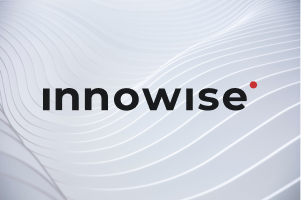
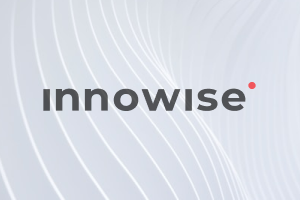

Har du noen gang slitt med programvareprosjekter som stadig overskrider budsjetter, overskrider tidsfrister eller ikke innfrir brukernes forventninger? Kanskje har teamet ditt slitt med å definere kravene i utgangspunktet, eller så har ansvarsområdene føltes spredt, kommunikasjonen har gått tregt og fremdriften har stoppet opp. Du er ikke alene - disse utfordringene er utrolig vanlige, men det finnes en velprøvd måte å takle dem på.
Det er akkurat det SDLC (livssyklus for programvareutvikling) er bygget for å løse. Den tilbyr en strukturert, repeterbar tilnærming til planlegging, utvikling og levering av programvare som faktisk fungerer.
I denne artikkelen vil jeg forklare hva SDLC egentlig betyr i dag, hvordan det hjelper deg med å avklare prosessen fra dag én, og hvordan det kan bidra til at du konsekvent leverer programvare raskere og med langt færre overraskelser.
Livssyklusen for programvareutvikling (SDLC) er en strukturert vei for programvareprosjektene dine, som bryter ned komplekse prosesser i håndterbare trinn - fra det første konseptet til utrulling og løpende støtte. Hver fase beskriver spesifikke oppgaver, tildeler klare roller og fastsetter konkrete leveranser, slik at alle involverte er på samme side og vet hva de skal gjøre.
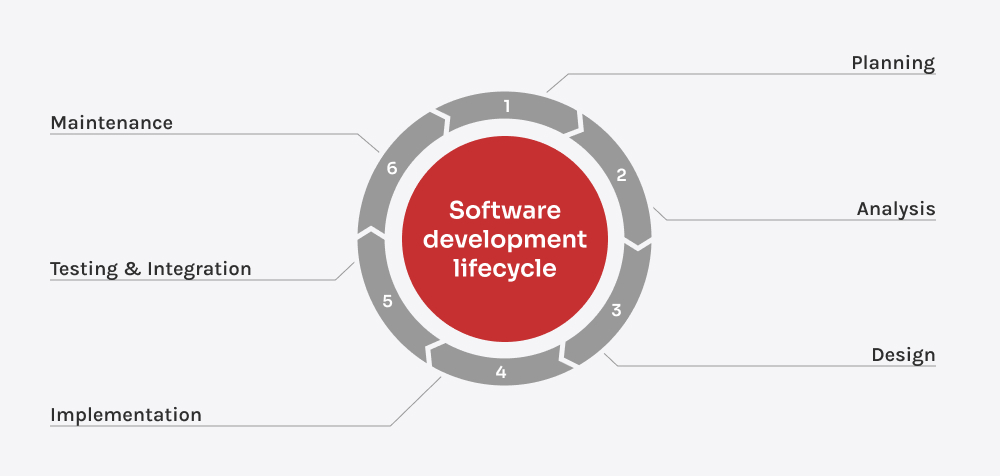
Programvare blir ikke til i en rett linje. Den utvikler seg gjennom en rekke tilsiktede SDLC-faser. SDLC styrer denne reisen, hjelper teamene med å holde seg på linje, redusere risiko og forme produkter som faktisk oppfyller brukernes og virksomhetens behov.
Dette er "hvorfor gjør vi dette"-fasen. Det er her teamene definerer prosjektets formål, omfang, mål, budsjett og tidslinjer. Forretningsanalytikere og prosjektledere samarbeider tett med interessentene for å identifisere smertepunkter og skissere en overordnet strategi. Her gjennomføres intervjuer med interessenter, mulighetsstudier, risikovurderinger og ressursplanlegging.
Når prosjektet er godkjent, går teamet i gang med å definere hva programvaren faktisk skal gjøre. Det første trinnet er å samle inn innspill fra alle interessenter for å forstå både forretningsbehov og brukerforventninger. Dette fører til dokumentasjon av funksjonelle krav (hva brukerne skal kunne gjøre) og tekniske krav (hvordan systemet skal oppføre seg under panseret). Til slutt går teamet gjennom og forbedrer kravene før de går videre.
I designfasen omdanner teamet de rå kravene til en praktisk plan for hvordan programvaren skal bygges. Det starter med design på høyt nivå - en kartlegging av systemets arkitektur, hovedmoduler, dataflyt og hvordan de ulike delene skal samhandle. Deretter går de videre til lavnivådesign, der de beskriver hver enkelt komponents logikk, struktur og virkemåte, inkludert databaseoppsett og nøkkelalgoritmer. Designere lager ofte wireframes eller klikkbare prototyper for å utforske brukerreisen og fange opp problemer med brukervennligheten tidlig. På dette stadiet slipper utviklerne å gjette seg frem og unngår kostbar omarbeiding ved å avdekke tekniske utfordringer før koden skrives.
I utviklingsfasen begynner programvaren å ta form etter hvert som utviklerne omsetter design til fungerende kode. De bygger applikasjonen bit for bit, ofte i korte, fokuserte sykluser som gir mulighet for hyppig testing, tilbakemelding og justering. Utviklerne skriver ikke bare kode - de tar bevisste arkitektoniske valg og strukturerer funksjoner slik at de kan vedlikeholdes på lang sikt. Gjennom hele prosessen er utviklerne tett synkronisert, og de gjennomgår hverandres arbeid, forbedrer logikken og løser problemer i fellesskap for å sikre at produktet er i tråd med både den tekniske visjonen og forretningsmålene.
Uansett hvor finpusset kodebasen er, er utestet programvare en tikkende bombe. I testfasen blir produktet testet før det når ut til brukerne. Den begynner vanligvis med systemtesting, der man kontrollerer om hele applikasjonen fungerer som en enhet. Deretter kommer manuell testing, der QA-ingeniørene simulerer virkelig bruk og grensetilfeller. Til slutt kommer automatisert testing inn for å dekke repeterende oppgaver i stor skala og sikre stabilitet etter hver nye distribusjon.
Distribusjon er når programvaren forlater laboratoriet og kommer ut i den virkelige verden. Teamet ruller ut produktet til brukerne - enten i én stor lansering eller gradvis gjennom trinnvise utgivelser - samtidig som de følger nøye med på hvordan det oppfører seg i live-miljøet. Denne fasen innebærer konfigurering av infrastruktur, oppsett av automatiserte distribusjonsrørledninger og utarbeidelse av tilbakeføringsstrategier i tilfelle noe skulle gå galt. Utviklere, DevOps-ingeniører og QA jobber ofte side om side for å gjøre lanseringsprosessen smidig, fikse problemer i siste liten og sørge for at alt fungerer akkurat som det skal fra dag én.
Når programvaren er live, begynner den virkelige testen. Teamet overvåker ytelsen, reagerer på tilbakemeldinger fra brukerne og håndterer feil og sårbarheter som dukker opp i den virkelige verden. Like viktig er det at supportteamene jobber i førstelinjen og samler inn innsikt fra brukerne, mens utviklerne tar seg av tekniske justeringer og langsiktige forbedringer. Programvaren blir et levende produkt - som stadig forbedres for å holde seg relevant og pålitelig.
Hvordan du bygger programvare er like viktig som hva du utvikler. SDLC-modeller gir struktur til kaoset - og hjelper teamene med å navigere i skiftende mål, stramme tidsfrister og den konstante dragkampen mellom kvalitet og hastighet.
Vannfallsmodellen er en lineær og sekvensiell tilnærming. Den består av forskjellige faser: Krav, design, implementering, testing, distribusjon og vedlikehold. Hver fase må fullføres før man kan gå videre til neste. Det er ingen vei tilbake når en fase er ferdig. Denne modellen fungerer godt når kravene er veldefinerte og det er lite sannsynlig at de vil endre seg.
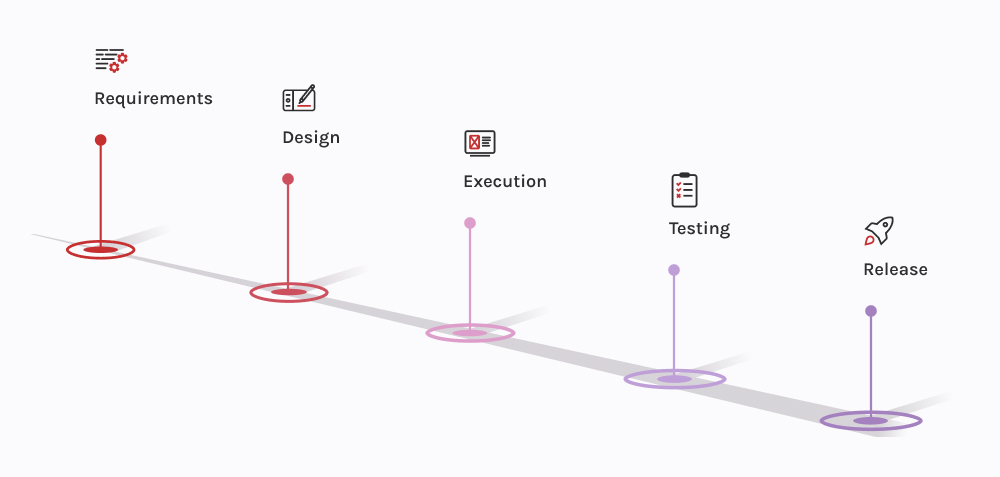
Agile-modellen deler prosjektet inn i små, håndterbare deler kalt sprinter, som vanligvis varer i 2-4 uker. I løpet av hver sprint utvikler, tester og samler tilbakemeldinger for å gjøre forbedringer. Agile legger vekt på kundesamarbeid og fleksibilitet, noe som gjør det mulig å gjøre endringer selv sent i utviklingsfasen. Populære Agile-rammeverk inkluderer Scrum og Kanban. Det er ideelt for prosjekter der kravene endres ofte, for eksempel programvare med regelmessige oppdateringer.
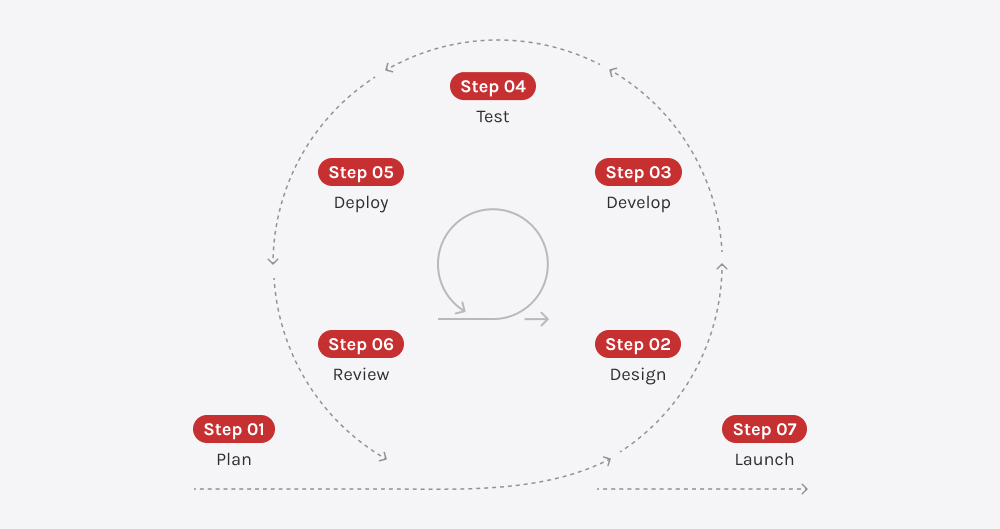
Den iterative modellen lar deg bygge programvare trinn for trinn. Du starter med en enkel versjon av produktet, og forbedrer det deretter gjennom flere runder. For hver iterasjon planlegger, designer, koder og tester teamet nye funksjoner eller forbedringer. Det er et godt valg når prosjektets omfang ikke er helt spikret i begynnelsen, fordi du kan tilpasse og forbedre underveis.

Spiralmodellen kombinerer iterativ utvikling med systematisk risikovurdering. Den består av fire hovedfaser: Planlegging, risikoanalyse, prosjektering og evaluering. Hver sløyfe i spiralen tar for seg ett sett med krav, med risikovurdering på hvert trinn. Modellen gjentar prosessen og legger gradvis til flere funksjoner. Den brukes for store, komplekse prosjekter med høy risiko, for eksempel innen romfart eller kritiske programvaresystemer.
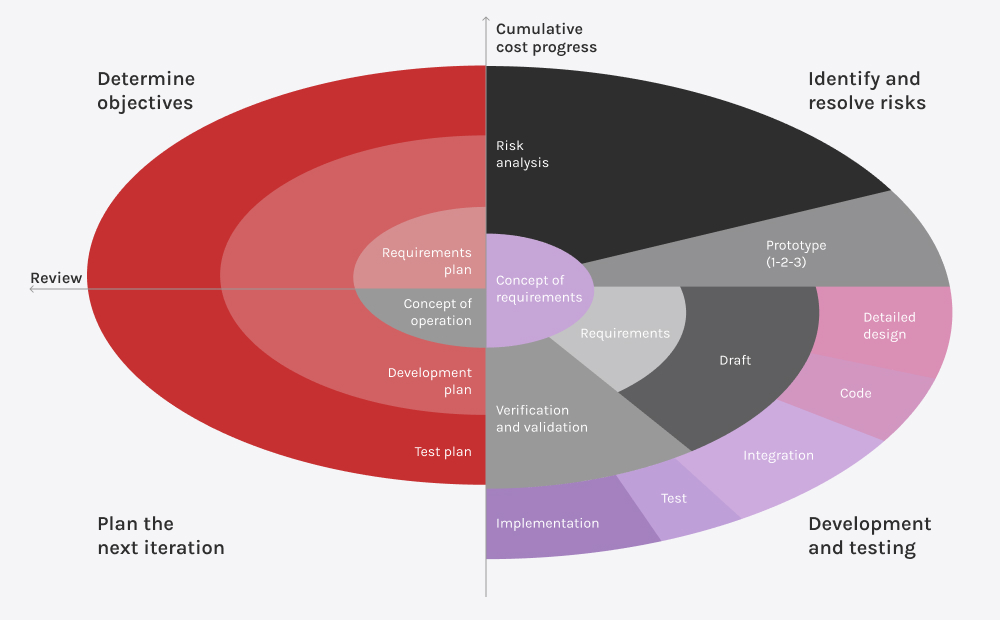
Denne modellen ligner på fossefallsmodellen, men integrerer omfattende testing i hver fase. Etter at en utviklingsfase er fullført, følger en tilsvarende testfase. Dette gjør den mer pålitelig for prosjekter der nøyaktighet og validering er avgjørende.
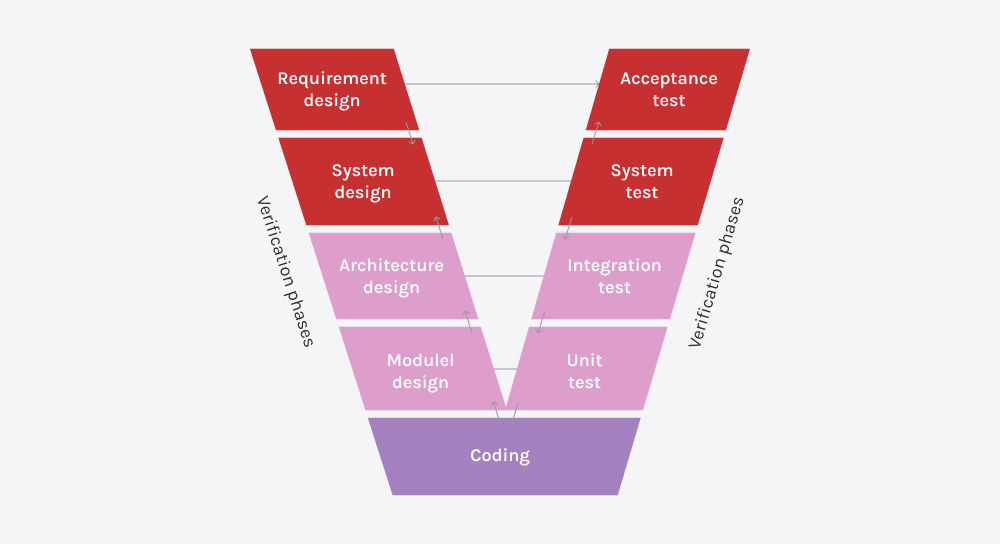
Big Bang-modellen innebærer at man starter utviklingen uten mye planlegging. Utviklerne lager programvaren basert på begrensede krav, ofte med sikte på en rask prototype. Denne modellen er risikofylt og kan gi uforutsigbare resultater, men den egner seg godt for små prosjekter med enkle krav eller eksperimentell programvare.
Den DevOps modellen er en tilnærming som kombinerer programvareutvikling (Dev) og IT-drift (Ops) for å forbedre samarbeid, hastighet og effektivitet. Den fokuserer på å automatisere repetitive oppgaver som testing, integrering, distribusjon og overvåking.

Velge riktig SDLC-modell kan sette tonen for hele prosjektet ditt. Det er ikke en modell som passer for alle - hva som passer best, avhenger av ting som prosjektets størrelse, kompleksitet, budsjett, tidsfrister, hvor erfarent teamet ditt er, og hvor involverte interessentene dine ønsker å være.
La oss se på hvordan du kan koble ulike SDLC-metoder med typiske prosjektegenskaper:
| Faktor | Anbefalte SDLC-modeller |
| Tydelige krav | Vannfall, V-modell |
| Endrede krav | Smidig, iterativ |
| Små prosjekter | Vannfall |
| Store eller komplekse prosjekter | Agile, Spiral, DevOps |
| Hyppig interaksjon med kundene | Agile, Scrum |
| Minimal interaksjon med kundene | Vannfall, V-modell |
| Fast budsjett og tidslinje | Vannfall, V-modell |
| Fleksibelt budsjett og tidslinje | Smidig, spiralformet |
| Behov for hurtigutløsere | Smidig |
| Lengre utviklingstid | Vannfall, V-modell |
| Kontinuerlig vedlikehold | Agile, DevOps |
En SDLC-tilnærming (Software Development Life Cycle) kan virkelig endre hvor smidig programvareprosjektene dine går. Slik bidrar SDLC til å gjøre hele prosessen langt mer håndterbar og effektiv:
Hos Innowise har vi sett hvordan programvaren utviklingens livssyklus (SDLC) gjør livet enklere for teamene våre og kundene våre. Ved å følge beste praksis for SDLC holder vi oss på samme side med alle involverte, og definerer mål og forventninger helt fra begynnelsen. Det betyr færre overraskelser, smidigere prosesser og forutsigbare resultater i alle faser, fra planlegging og utvikling til testing og distribusjon.
Tenker du på å oppgradere din egen tilnærming? Ta en titt på vår tjenesteside og se hvordan vi kan hjelpe deg med å skape klarhet og effektivitet i ditt neste programvareprosjekt.
Dmitry leder den tekniske strategien bak tilpassede løsninger som faktisk fungerer for kundene - nå og når de vokser. Han bygger bro mellom store visjoner og praktisk utførelse, og sørger for at hver eneste utvikling er smart, skalerbar og tilpasset virksomheten.
Ranger denne artikkelen:
4.8/5 (45 anmeldelser)







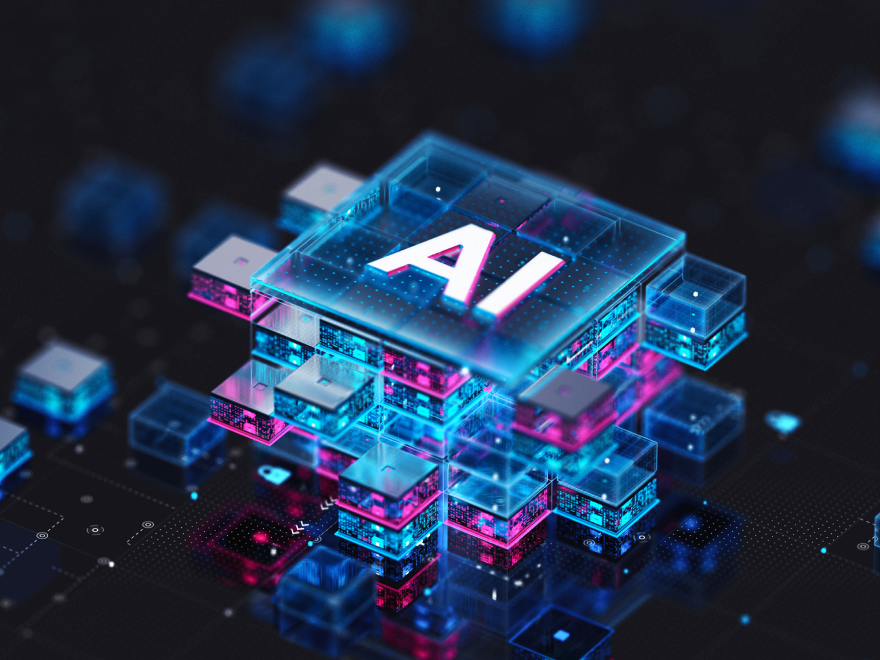




Meldingen din er sendt.
Vi behandler forespørselen din og kontakter deg så snart som mulig.

Ved å registrere deg godtar du vår Retningslinjer for personvern, inkludert bruk av informasjonskapsler og overføring av dine personopplysninger.